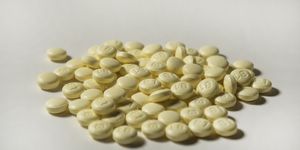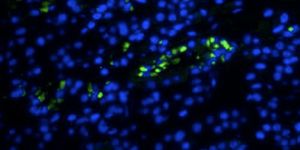Researchers Quantify How Much Ingested Plastic it Takes to Down a Sea Turtle
Oceanic plastic pollution has developed into a significant issue in recent years. Not only does it dirty up our planet, but it imposes a serious risk to marine wildlife like sea turtles and whales that ingest the stuff and later perish from related health issues.
Experts often perform necropsies to understand how these marine animals die. While most of these procedures reveal substantial concentrations of plastic in the deceased animals’ stomach, that doesn’t mean that even seemingly-negligible amounts of plastic don't have similar impacts.
Image Credit: Pixabay
A study published this week in the journal Scientific Reports attempts to quantify just how much plastic it takes to kill a sea turtle after ingestion. Spoiler: the results may surprise you.
Upon analyzing several years’ worth of sea turtle death and stranding reports, the researchers concluded that ingesting a single piece of plastic increases a sea turtle’s mortality risk by as much as 22 percent. Upon devouring 13 additional pieces (14 in total), the animal’s mortality risk jumps to approximately 50 percent.
As you can probably imagine, more plastic only increased the odds of mortality, with 226 or more pieces of plastic virtually translating to a certain death sentence.
The study also found that younglings were the most susceptible to plastic pollution, but even adult sea turtles occasionally kick the bucket after ingesting fragments that find their way into the ocean via human carelessness.
As it would seem, sea turtles are particularly vulnerable to plastic ingestion because of their inability to vomit.
"Because of their digestive tract, they don't regurgitate anything," study lead author Dr. Britta Denise Hardesty from Australia's Commonwealth Scientific and Industrial Research Organization CSIRO explained to BBC news.
"If it ends up in the wrong place, even one little thin, filmy piece of plastic can block that canal and mean that nothing can pass and ultimately the blockage can result in death."
Related: Plastic and other ocean trash to blame for sea turtle's death
Matters are worsened by the fact that younger sea turtles devour more plastic bits than their adult counterparts. The researchers believe this is because sea turtle hatchlings follow the ocean’s current just as plastic does, making for easier pickings, and that’s not a good thing by any stretch of the meaning.
"We know that disproportionately finding it more in younger animals who won't make it to the reproductive state will have long-term consequences for the survival of the species," Dr. Hardesty added. "It's very concerning."
Related: Another whale perishes from swallowing plastic bags
What it all boils down to is that humankind needs to manage its plastic waste more effectively so that it doesn’t end up in Earth’s oceans. Otherwise, endangered sea turtles and other marine wildlife could one day cease to exist.
Source: BBC, Scientific Reports









